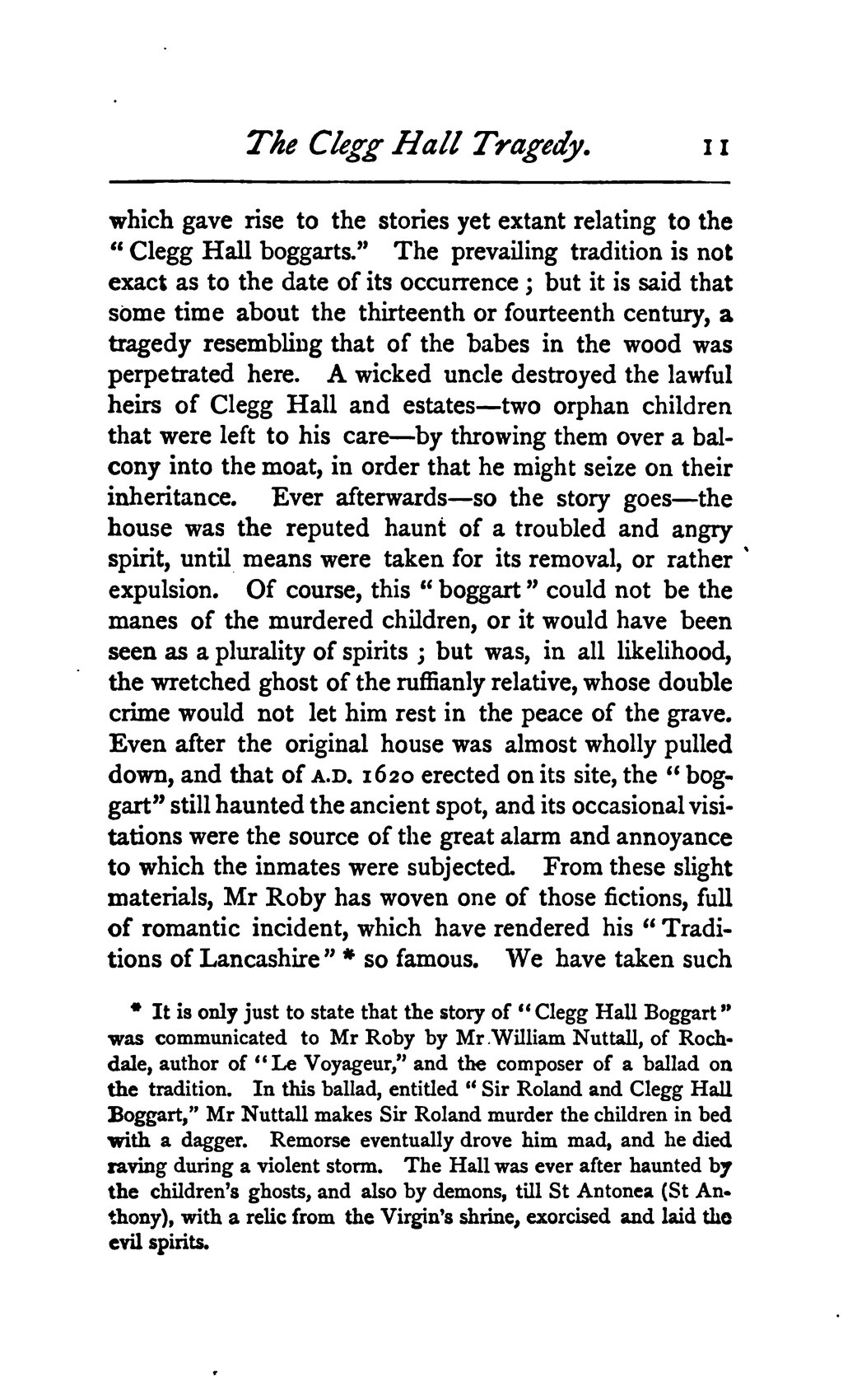which gave rise to the stories yet extant relating to the "Clegg Hall boggarts." The prevailing tradition is not exact as to the date of its occurrence; but it is said that some time about the thirteenth or fourteenth century, a tragedy resembling that of the babes in the wood was perpetrated here. A wicked uncle destroyed the lawful heirs of Clegg Hall and estates—two orphan children that were left to his care—by throwing them over a balcony into the moat, in order that he might seize on their inheritance. Ever afterwards—so the story goes—the house was the reputed haunt of a troubled and angry spirit, until means were taken for its removal, or rather expulsion. Of course, this "boggart" could not be the manes of the murdered children, or it would have been seen as a plurality of spirits; but was, in all likelihood, the wretched ghost of the ruffianly relative, whose double crime would not let him rest in the peace of the grave. Even after the original house was almost wholly pulled down, and that of A.D. 1620 erected on its site, the "boggart" still haunted the ancient spot, and its occasional visitations were the source of the great alarm and annoyance to which the inmates were subjected. From these slight materials, Mr Roby has woven one of those fictions, full of romantic incident, which have rendered his "Traditions of Lancashire"[1] so famous. We have taken such
- ↑ It is only just to state that the story of "Clegg Hall Boggart" was communicated to Mr Roby by Mr William Nuttall, of Rochdale, author of "Le Voyageur," and the composer of a ballad on the tradition. In this ballad, entitled "Sir Roland and Clegg Hall Boggart," Mr Nuttall makes Sir Roland murder the children in bed with a dagger. Remorse eventually drove him mad, and he died raving during a violent storm. The Hall was ever after haunted by the children's ghosts, and also by demons, till St Antonea (St Anthony), with a relic from the Virgin's shrine, exorcised and laid the evil spirits.
